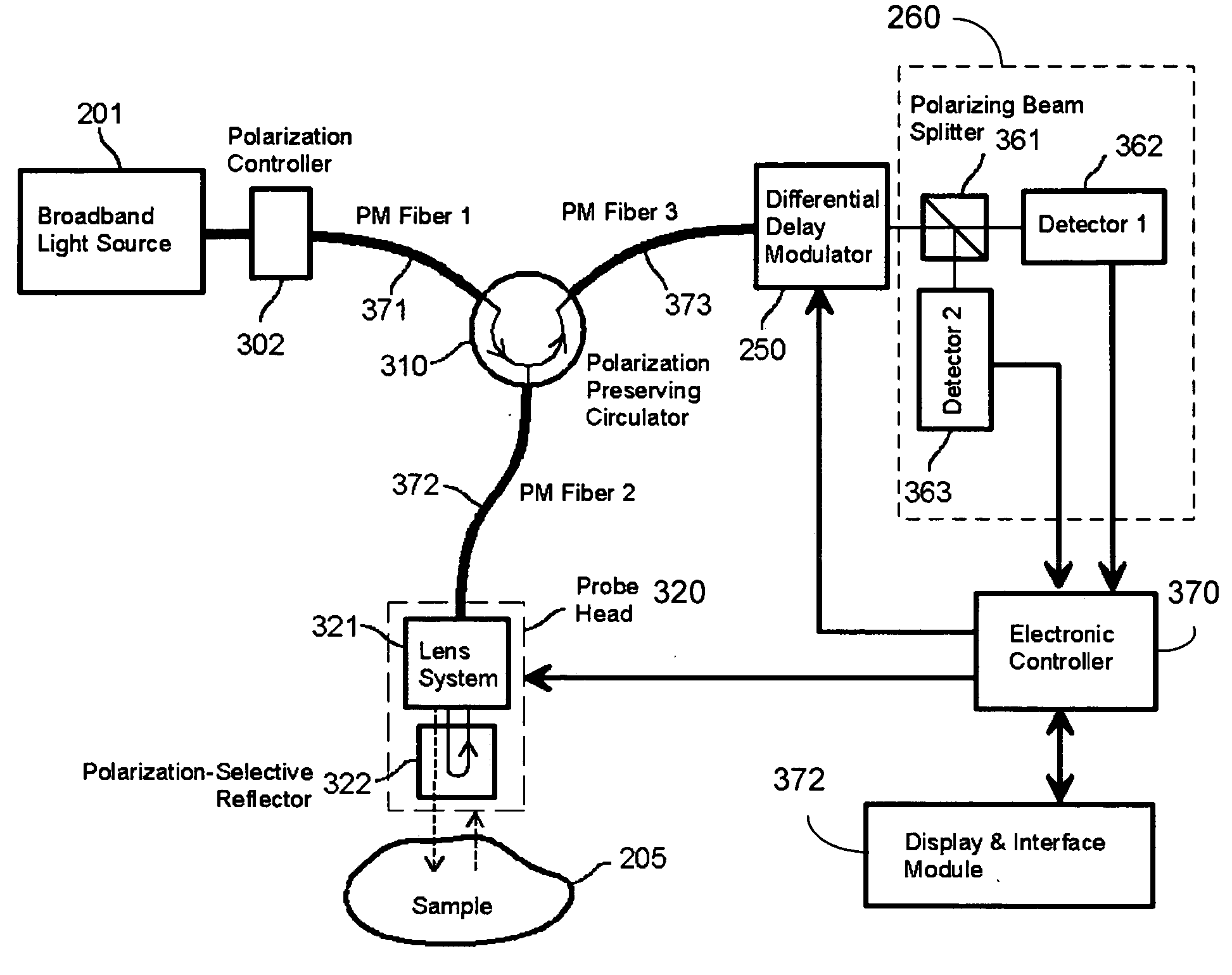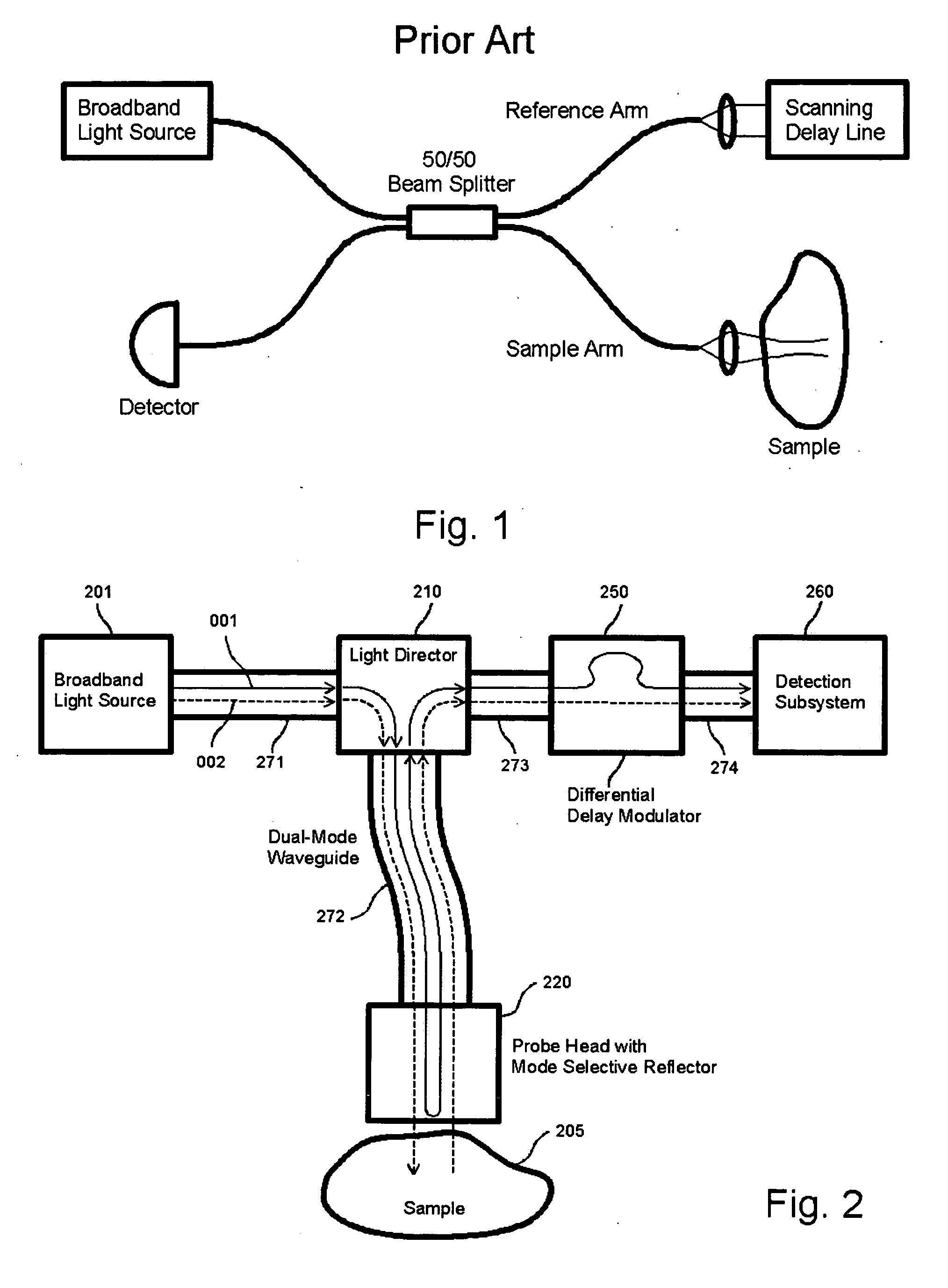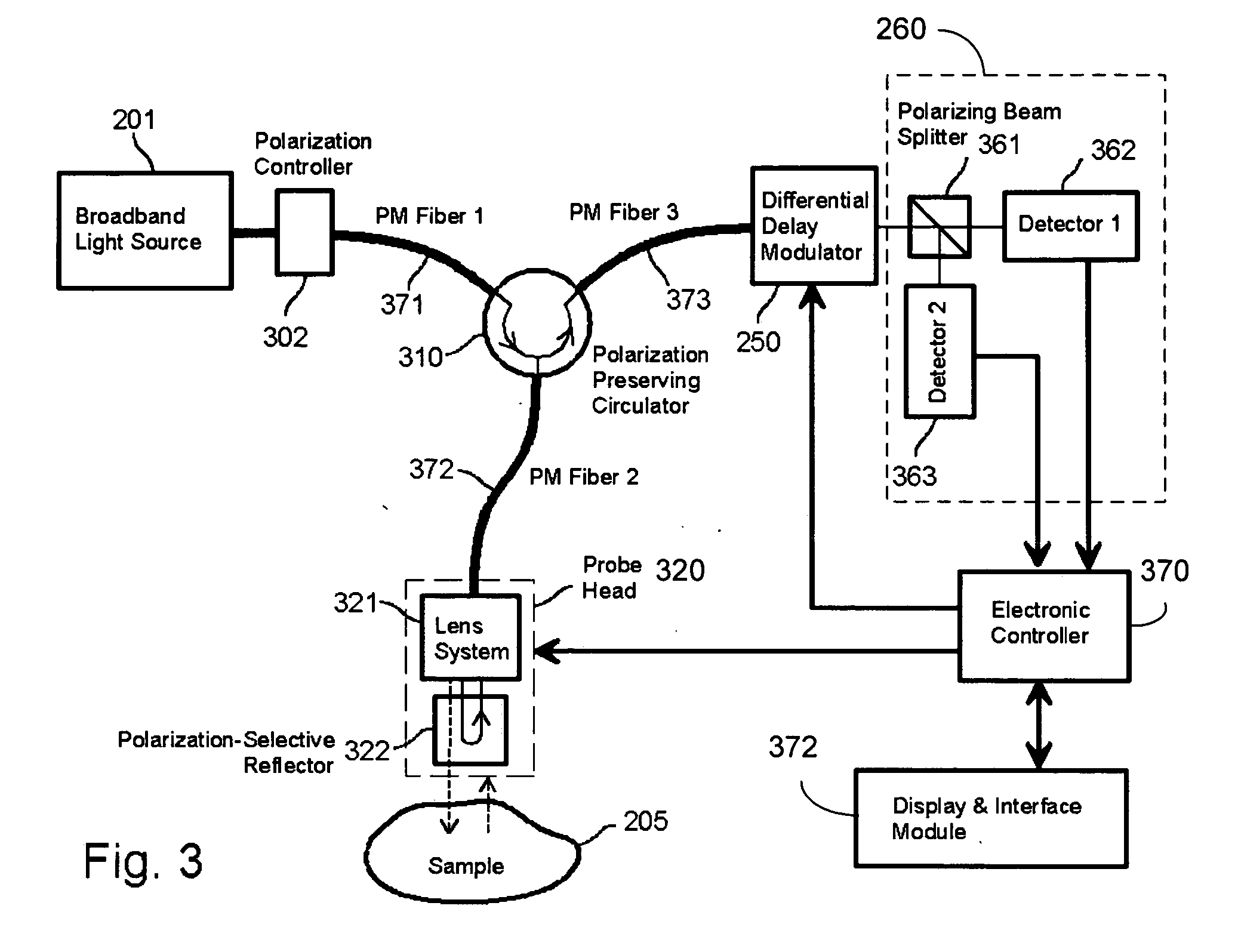Coherence-gated optical glucose monitor
a glucose monitor and coherencegate technology, applied in the field of non-invasive optical probing of various substances, can solve the problems of significant fluctuation and drift of the differential phase between the sample light beam and the reference light beam, and the relative optical phase or differential delay between the two beams may experience uncontrolled fluctuations and variations, and achieve high signal stability, effective use of source radiation, and high signal-to-noise ratio
- Summary
- Abstract
- Description
- Claims
- Application Information
AI Technical Summary
Benefits of technology
Problems solved by technology
Method used
Image
Examples
Embodiment Construction
The following sections first describe various techniques and devices for non-invasive optical probing and then describe monitoring of glucose levels using various optical probing devices and systems.
Energy in light traveling in an optical path such as an optical waveguide may be in different propagation modes. Different propagation modes may be in various forms. States of optical polarization of light are examples of such propagation modes. Two independent propagation modes do not mix with one another in the absence of a coupling mechanism. As an example, two orthogonally polarization modes do not interact with each other even though the two modes propagate along the same optical path or waveguide and are spatially overlap with each other. The exemplary techniques and devices described in this application use two independent propagation modes in light in the same optical path or waveguide to measure optical properties of a sample. A probe head may be used to direct the light to t...
PUM
| Property | Measurement | Unit |
|---|---|---|
| wavelength | aaaaa | aaaaa |
| wavelength | aaaaa | aaaaa |
| reflection | aaaaa | aaaaa |
Abstract
Description
Claims
Application Information
 Login to View More
Login to View More - R&D
- Intellectual Property
- Life Sciences
- Materials
- Tech Scout
- Unparalleled Data Quality
- Higher Quality Content
- 60% Fewer Hallucinations
Browse by: Latest US Patents, China's latest patents, Technical Efficacy Thesaurus, Application Domain, Technology Topic, Popular Technical Reports.
© 2025 PatSnap. All rights reserved.Legal|Privacy policy|Modern Slavery Act Transparency Statement|Sitemap|About US| Contact US: help@patsnap.com



